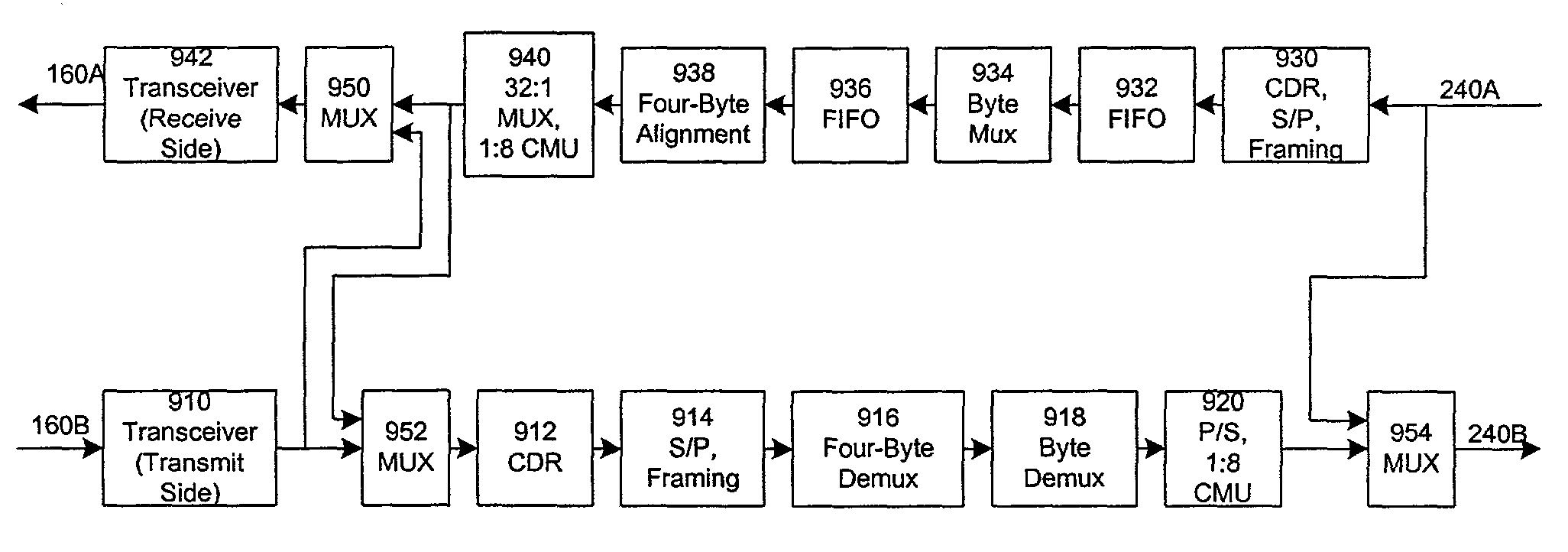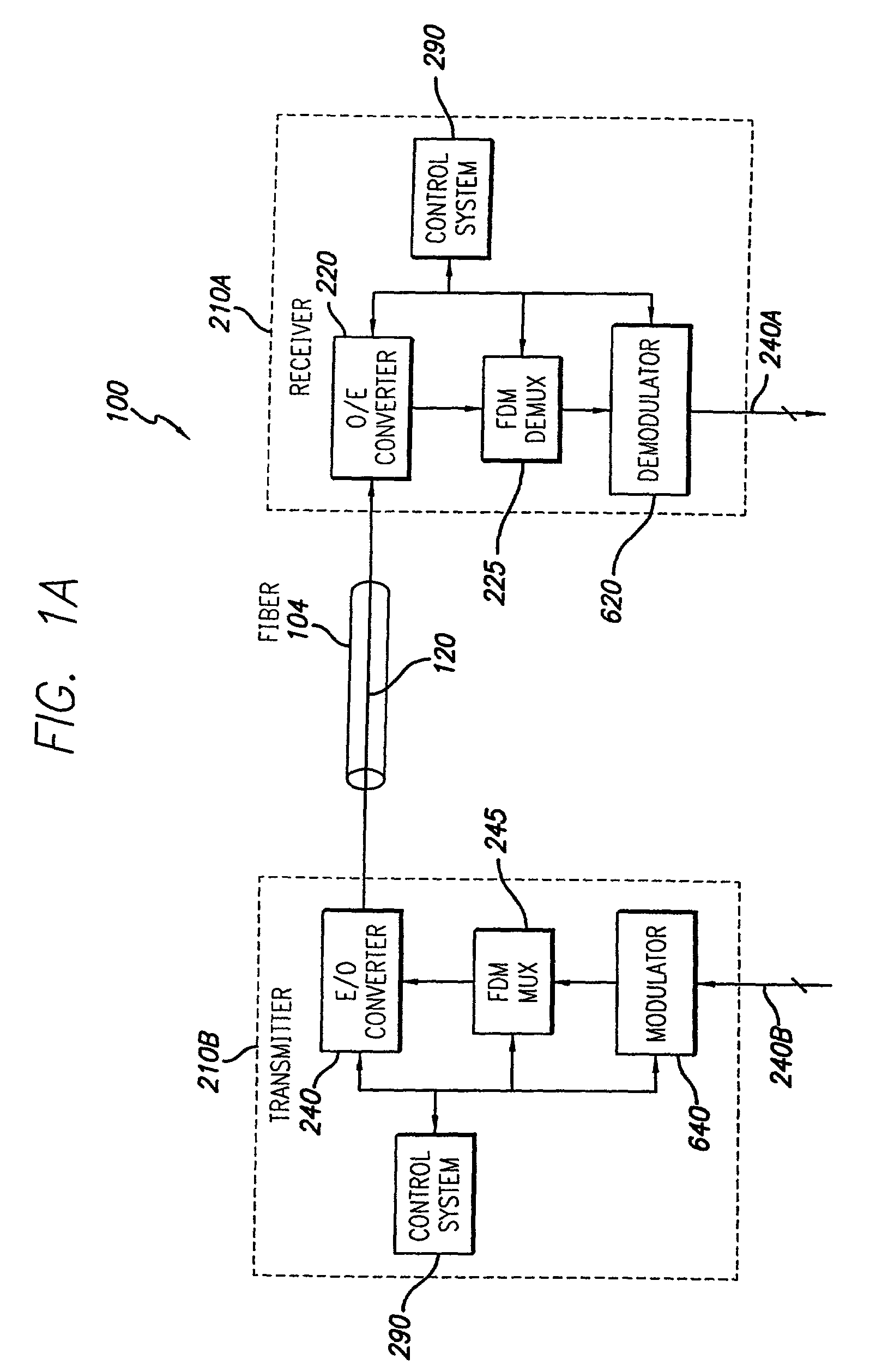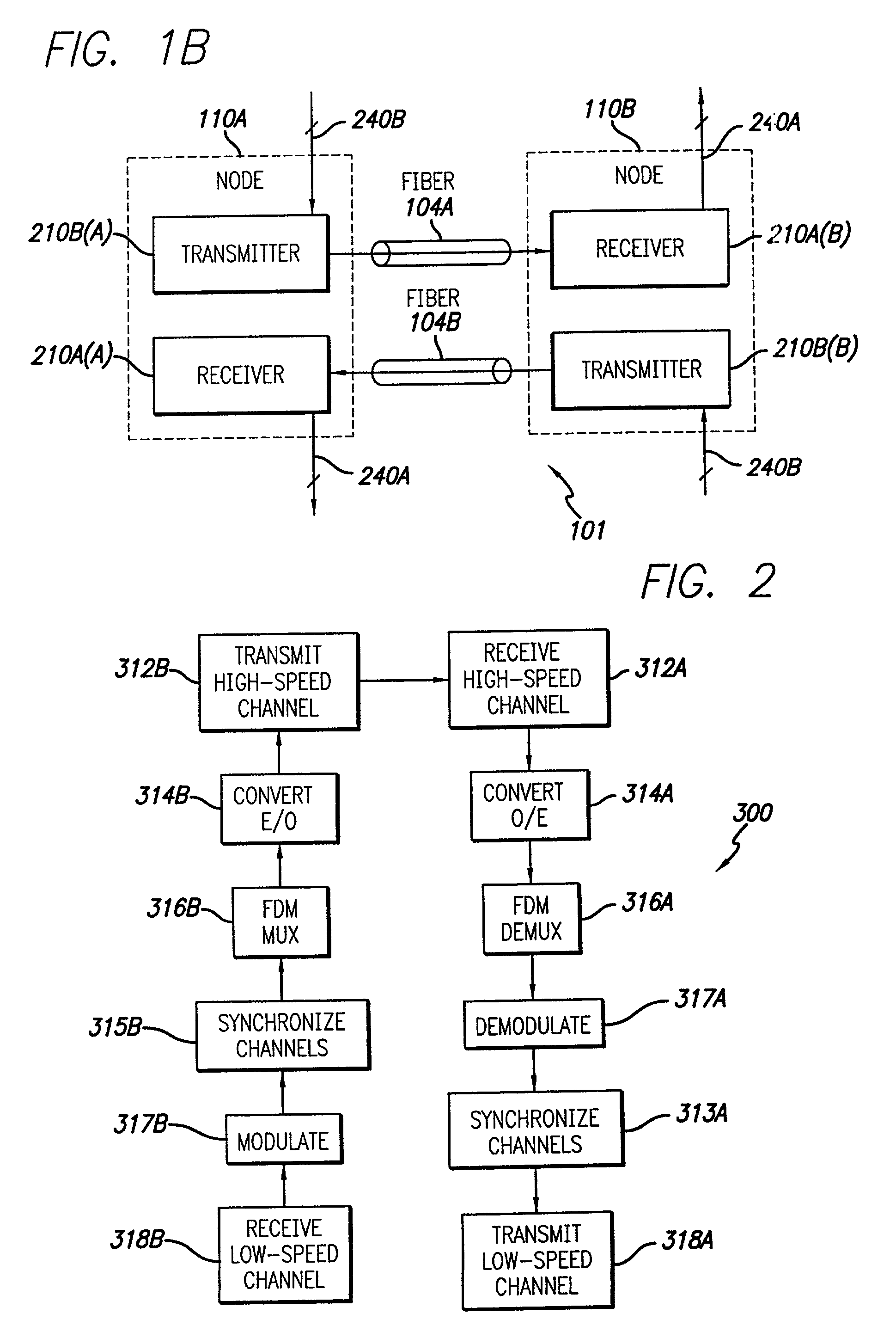Through-timing of data transmitted across an optical communications system utilizing frequency division multiplexing
a technology of optical communication system and data transmission rate, applied in the field of maintaining the timing of data transmitted across optical communication system, can solve the problems of reducing data transmission rate, increasing the demand, and requiring longer timeslots, so as to remove unwanted jitter
- Summary
- Abstract
- Description
- Claims
- Application Information
AI Technical Summary
Benefits of technology
Problems solved by technology
Method used
Image
Examples
Embodiment Construction
[0038]FIG. 1A is a block diagram of a fiber optic communications system 100 in accordance with the present invention. System 100 includes a transmitter 210B coupled to a receiver 210A by an optical fiber 104. Transmitter 210B and receiver 210A are both based on frequency division multiplexing (FDM). Transmitter 210B includes a modulator 640, FDM multiplexer 245 and E / O converter 240, coupled in series. The modulator 640 applies a modulation to a plurality of incoming signals 240B. The FDM multiplexer 245 combines the modulated signals into a single signal using FDM techniques. E / O converter 240 converts this single signal from electrical to optical form 120. The E / O converter 240 preferably includes an optical source, such as a laser, and an optical modulator, such as a Mach Zender modulator, which modulates the optical carrier produced by the optical source with an incoming electrical signal.
[0039]For convenience, the incoming signals 240B shall be referred to as low-speed data cha...
PUM
 Login to View More
Login to View More Abstract
Description
Claims
Application Information
 Login to View More
Login to View More - R&D
- Intellectual Property
- Life Sciences
- Materials
- Tech Scout
- Unparalleled Data Quality
- Higher Quality Content
- 60% Fewer Hallucinations
Browse by: Latest US Patents, China's latest patents, Technical Efficacy Thesaurus, Application Domain, Technology Topic, Popular Technical Reports.
© 2025 PatSnap. All rights reserved.Legal|Privacy policy|Modern Slavery Act Transparency Statement|Sitemap|About US| Contact US: help@patsnap.com



